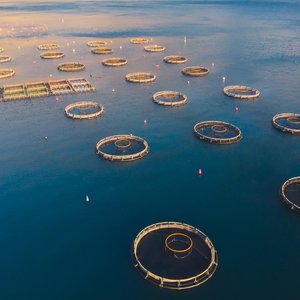In December 2024, the U.S. Environmental Protection Agency (EPA) completed the final risk evaluation for formaldehyde under the Toxic Substances Control Act (TSCA). EPA risk evaluation findings state that “formaldehyde presents an unreasonable risk of injury to human health under its conditions of use (COU) because of acute inhalation and dermal exposures.”
The TSCA does not authorize EPA to conduct risk assessments and then develop management actions (i.e., regulations) for Food and Drug Administration-approved drugs. However, new, restrictive EPA regulations impacting the use of large quantities of formaldehyde in a variety of beneficial uses could severely restrict use and shut down high volumes of U.S. formaldehyde production.
The loss of economy of scale is expected to increase the price for the basic chemical and create a national dependence upon imported formaldehyde resulting in a ripple effect through the supply and use chains including the only FDA-approved treatment for fish eggs. Currently, there is no FDA-approved alternative treatment available.
The American Chemistry Council’s (ACC) Formaldehyde Panel said in a statement that “while the ACC acknowledges EPA made several important adjustments in the final risk evaluation, concerns remain about the agency’s continued disregard for statutory requirements on scientific quality, peer reviews, and engagement with public and interagency comments. TSCA requires that EPA reviews and regulates a chemical based on the best available science. This risk evaluation relies on a flawed assessment by EPA’s Integrated Risk Information System (IRIS) program – a program that has never been authorized by Congress, lacks transparency and is out of step with the best available science and methods. EPA should go back to the scientific drawing board on formaldehyde instead of pursuing unaccountable lame-duck actions that threaten the U.S. economy and key sectors that support health, safety and national security.”
The ACC highlighted that multiple federal agencies, including the Department of Defense and the Centers for Disease Control and Prevention, raised concerns about the evaluation. “Ignoring these concerns could result in overly restrictive regulation of this building block chemistry, handicapping America’s economy and creating reliance on overseas production,” the ACC warned.
The EPA’s conclusion that 58 of 63 formaldehyde uses pose “unreasonable risk” raises alarm, since such broad findings could lead to bans or impractical standards for critical activities like manufacturing and recycling, the statement said.
Proposed workplace exposure limits also drew criticism for being “inconsistent with the best available science” and stricter than updated European Union standards. “These limits disregard effective safety measures already in use, such as personal protective equipment,” the ACC noted.
“Any assessment of formaldehyde must begin with the best available science. Formaldehyde is a natural part of our world and, through decades of responsible innovation and regulation, is essential to critical applications for housing, agriculture, transportation, healthcare, and national security. Formaldehyde technologies have broad roles in the economy, supporting over 1.5 million jobs and $1.6 trillion in manufacturing shipments and other economic output in 2023 in the United States,” the statement said.
“Effective implementation of the TSCA program has been plagued with challenges, and the final risk evaluation does not meet EPA’s requirement to use the best available science. If EPA continues on its current path during the two-year risk management phase, formaldehyde manufacturing and many of its downstream uses could be severely restricted or potentially banned in the United States.
“Formaldehyde is integral to modern life, and businesses and families rely on the important products it enables. Without robust formaldehyde manufacturing in the United States, we could face increased product prices, reduced economic output, and a loss of the U.S.’s competitive edge. In the coming months, we will collaborate with formaldehyde users to engage the next Administration and safeguard access to this essential chemical building block.”
The ACC urges the EPA to adopt a science-based approach that balances safety with the critical economic and societal roles of formaldehyde.













